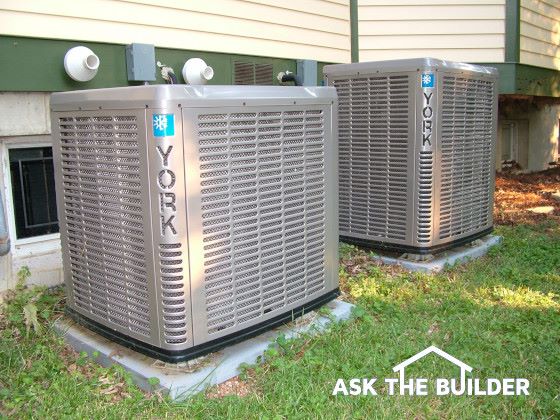Air Conditioning Performance – A/C for Older Houses

Air Conditioning Performance
DEAR TIM: I have been experiencing poor performance from my central air conditioning. Some rooms are uncomfortably warm late in the afternoon while other parts of the house are chilly. What might be causing this? Is there an easy solution? Also, is there a way to install central air conditioning in my mother's house that currently has hot water heat? She has no existing ductwork. Monica Emporia, VA
DEAR MONICA: There could be many reasons why your air conditioner is not delivering ample amounts of cool air to each room. Some of the solutions are easy to implement. Others may require new equipment or duct changes. Finding the cause of your discomfort may take some effort.
The cooling process within your home involves three primary pieces of equipment: a coil within the ductwork near your furnace or air handler, a powerful fan within the air handler and a condensing unit. The condensing unit is often the loud machine that is outside your home. All of these components must be sized accurately. If they are not, you don't stand a chance at cooling your house during the hottest parts of the day.
Heating and cooling professionals can easily calculate the amount of heat gain your house experiences during the summer time. They measure the size of the house, the amount and types of windows you have, thickness of wall and ceiling insulation, orientation of your house and many other things. These numbers tell them how many "tons" of cooling do you need to adequately cool your home. You need to have a professional perform a heat gain calculation on your home. Once you know how many "tons" of cooling you need, you can see if your existing equipment is sized properly.
If your equipment is sized correctly, it may be low on refrigerant. This is a simple thing for a professional to check. The inside coil near your air handler/furnace may be dirty as well. A dirty coil can not cool the hot air adequately as it rushes through the ducting system.
The air filter within your system may be dirty. Dirty air filters slow the amount of air that passes over the indoor coil. If the powerful fan within your furnace / air handler is belt driven, it may not be spinning fast enough. The belt that runs between the electric motor and the fan may have loosened. Slow fan speeds simply do not allow enough cool air to enter the rooms.
Your ductwork design may also be to blame. The rooms that get warm may not have enough supply ducts. These rooms can be starved of cool air. The rooms that are chilly may have ducts that are too large. The main duct that leaves the furnace may not be sized properly. It should get smaller in size as branch ducts leave this duct to go towards each room. An air conditioning professional can check this for you as well.
Great news! You mother's house can be air conditioned. In fact, any older home, condominium or other structure that does not currently have large ductwork can be cooled with central air conditioning. There are companies that make systems that employ smaller flexible piping that can be snaked through existing floor and ceiling joist spaces. Often the cooling equipment can be placed in an attic space or adapted to fit in-place equipment.
The air that travels through the small tubes enters each room through round outlet holes. Attractive cover plates mask their locations. The systems can operate very quietly. If installed by an experienced professional, you will not hear any noise as the cool air flows past you on those uncomfortable summer evenings. There are other benefits. You can filter your air during the winter months. A heat pump system will allow you to take the chill off indoor air during spring and fall months. This will allow your mother to reduce the amount of time her boiler operates.
If you want to learn more about air conditioning and heating units, I suggest you buy a copy of Refrigeration and Air Conditioning Technology. This book is a little technical, but it has many very important facts and guidelines dealing with the fundamental and practical applications for understanding and maintaining all heating and cooling systems. The color illustrations and photographs are terrific. It is designed and written for students in vocational - technical schools and colleges, community colleges and apprenticeship programs. The content is in a format for students or for those working in the field who want to increase their knowledge and skills. "Do-it-yourselfers" will find this text valuable in understanding and maintaining heating and cooling systems.